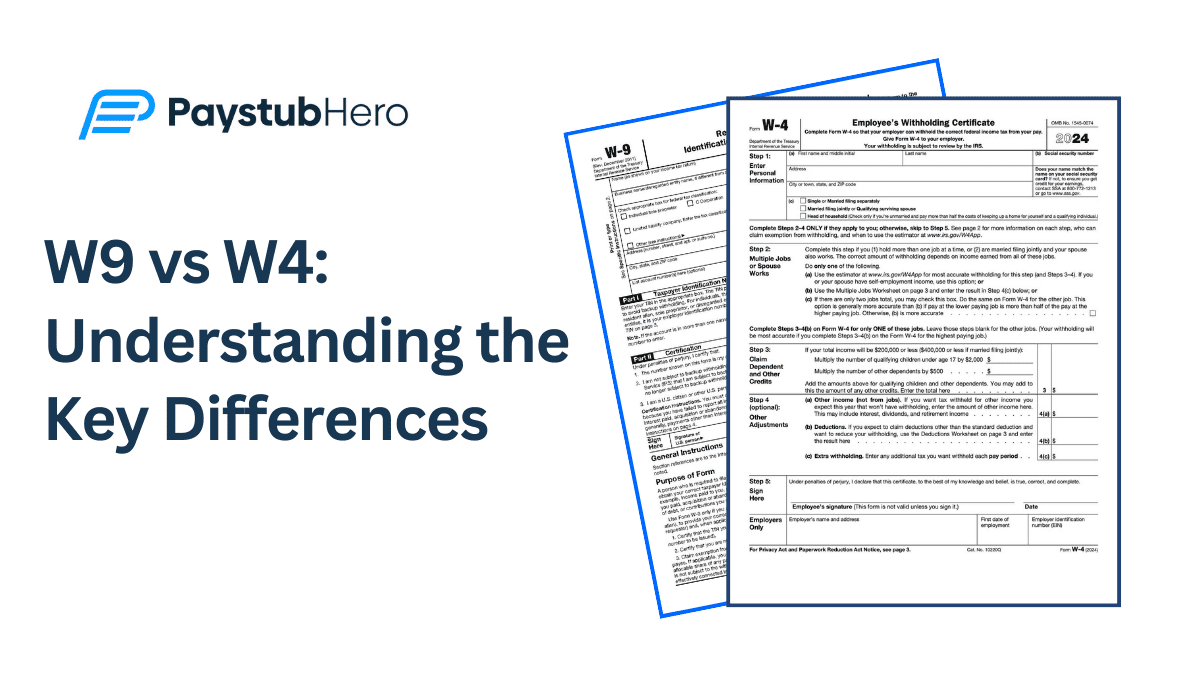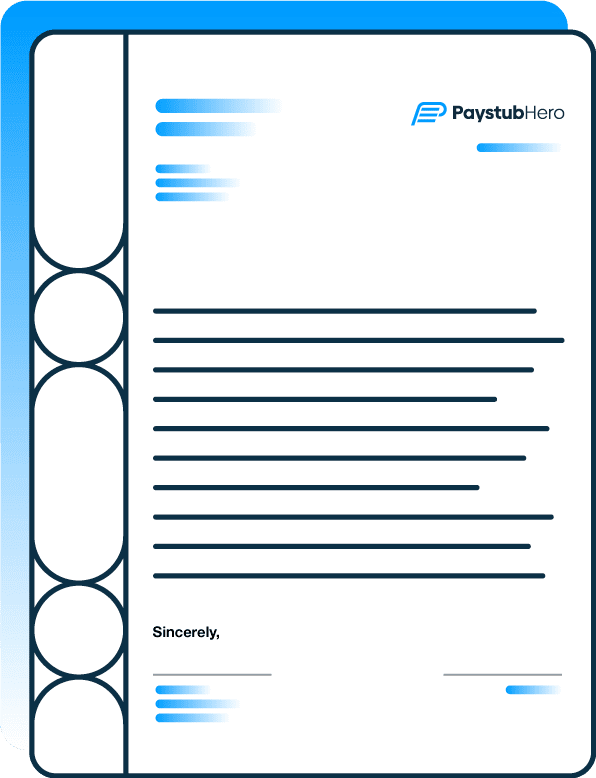The main difference between a W-9 and a W-4 is who fills them out: employees use W-4s, while independent contractors use W-9s. This article will explain the key differences between these two important tax forms.
What is a W-4 Form?
The above form is the W-4. It’s also called the “Employee’s Withholding Certificate,” which is an important document for employees in the U.S. It tells your employer how much federal income tax to take out of your paycheck.
That money goes straight to the IRS to help cover your taxes ahead of time.
Why the W-4 is Important
The W-4 helps you control your taxes. If you fill it out the right way, you can make sure the amount taken from your paycheck is just right.
That way, you’re less likely to owe a big chunk of money or get a huge refund at tax time.
What’s on the W-4?
Here are the main parts:
⦿ Personal Info:
This is where you write your name, address, and Social Security number. You also pick your filing status, like Single or Married, which affects how much of your income gets taxed.
⦿ Multiple Jobs or Spouse Works:
If you have more than one job or your spouse works too, this part helps adjust for the total income. You can use the IRS’s online tools to get it just right.
⦿ Dependents:
Got kids or dependents? You can claim them here, which lowers the amount of taxes you owe.
⦿ Other Adjustments:
If you have extra income or want to include more deductions, this section lets you fine-tune your withholding.
⦿ Extra Tax Withholding:
Want to be extra safe and have a little more taken out of each paycheck? You can add an amount here.
Filling out the W-4 properly helps you stay in control of your taxes and avoid any surprises later. It’s simple, and once it’s done, you’re good to go.
When to Fill Out a W-4
You’ll need to fill out a W-4 form at certain points in your life, and it’s simpler. The most common time is when you start a new job. Employers usually include the W-4 as part of your onboarding paperwork, so you can get it done right away.
But it’s not just about new jobs.
Life changes can also mean it’s time to update your W-4. For example, if you get married or divorced, have a child, or adopt, your tax situation changes, and so should your withholding. The same goes if you pick up a second job, your income shifts, or you buy a home, which can affect deductions.
These changes can all impact how much tax you owe, so updating your W-4 helps keep things accurate.
Whenever your circumstances change, take a moment to review your W-4. Keeping it current ensures your employer withholds the right amount of tax, saving you from surprises at tax time. If you need a new form, you can grab one from your employer or download it from the IRS website.
What is a W-9 Form?
While the W-4 is for employees, the W-9 is for independent contractors, freelancers, and other non-employees who receive payments for services.
What’s the Purpose of the W-9?
A W-9 is a form businesses use to gather important details from people or companies they pay for services. This information helps the business report those payments correctly to the IRS.
For example, if you hire a freelance writer, graphic designer, or another independent contractor, you’ll probably ask them to fill out a W-9.
Here’s a breakdown of the key elements of the W-9:
➡ Name and Business Name (if applicable):
This section requires the individual or business’s legal name. If the individual operates under a business name (like a DBA or “doing business as”), that should be included as well.
➡ Taxpayer Identification Number (TIN):
This is the most important piece of information on the W-9.
The TIN is used to identify the recipient of the payment for tax purposes. For individuals, this is typically their Social Security Number (SSN).
For businesses, it’s usually an Employer Identification Number (EIN). If the individual is a sole proprietor, they can use their SSN or EIN.
➡ Business Classification:
This section asks for the entity type of the business. This includes options like Individuals, Corporations, Partnership, LLC, etc.
➡ Address:
The recipient’s mailing address.
➡ Certification:
By signing the W-9, the recipient certifies that the TIN provided is correct and that they are not subject to backup withholding (we’ll touch on that in a moment).
Why Do Businesses Need W-9s?
Businesses need W-9s to comply with IRS reporting requirements.
When a business pays an independent contractor $600 or more in a calendar year, they are required to report those payments to the IRS using Form 1099-NEC (Nonemployee Compensation).
The information collected on the W-9 is what allows them to accurately complete and file these 1099-NEC forms.
Key Differences Between W-4 and W-9
We can now directly compare them to pinpoint the key differences in their purpose and application.
1. Working Relationship
The main difference between the W-4 and W-9 lies in the working relationship.
The W-4 is for employees, where the employer controls the work, offers benefits like health insurance, and withholds payroll taxes like Social Security and Medicare. The form helps the employer figure out how much income tax to deduct from the employee’s paycheck.
On the other hand, the W-9 is used for independent contractors.
Contractors work on their own terms, don’t receive benefits, and don’t have taxes withheld by the payer. Instead, the W-9 provides the payer with the information they need to report payments to the IRS, usually with a 1099-NEC form.
2. Triggered Actions
Another big difference is what each form triggers.
The W-4 leads to tax withholding. Employers use it to calculate and send the right amount of tax from an employee’s paycheck to the IRS. Meanwhile, the W-9 doesn’t involve withholding.
It’s all about reporting payments.
Contractors are responsible for paying their own income and self-employment taxes using the details reported by the payer.
3. Tax Documents
Tax documents also differ for the two.
Employees who fill out a W-4 receive a W-2 at the end of the year. This shows their earnings and the taxes that were already withheld, which they use to file their taxes. Contractors filling out a W-9 get a 1099-NEC if they earned more than $600. They use this to file their taxes, including self-employment taxes, along with any business expenses.
In simple terms, the W-4 is all about withholding taxes for employees, while the W-9 is about reporting income for contractors.
Simplify Contractor Taxes for Your Small Business
Understanding the connection between W-9s and 1099-NECs is crucial for accurate contractor tax reporting.
PaystubHero simplifies this process by allowing you to easily generate 1099-NEC forms directly from the information collected on W-9s. Streamline your workflow, ensure compliance, and save valuable time.
FAQs
Here are some common questions about the differences between the W-9 and W-4.
The W-4 and I-9 serve different purposes. The W-4 helps employers determine how much federal income tax to withhold from an employee’s paycheck. The I-9 verifies an employee’s identity and eligibility to work in the United States.




